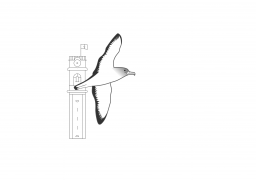4. Mapping seabird sensitivity to offshore wind development: showcasing existing tools and practices and exploring enhanced methods using seabird distribution data
Bethany Clark & Antonio Vulcano (BirdlIfe International,); invited speakers: Maria Dias (University of Lisbon, Portugal), João Guilherme (independent researcher), Marine Conservation team of SPEA, Portugal)
Contact: antonio.vulcano@birdlife.org
Rapid renewable energy development is vital for tackling the climate crisis, but offshore wind farms raise conservation concerns for seabirds due to collision and habitat loss. To reduce potential impacts, BirdLife and its partners have developed methods for producing avian sensitivity maps (with maps developed for Italy, Poland and Portugal so far). Sensitivity maps can be used by governments, NGOs, development banks and industry to ensure birds are considered in marine spatial planning, and leverage advocacy work at national and regional levels. We will explore current methods to elaborate sensitivity maps, their replicability in different contexts (e.g., geographies, data-richness) and possible ways for improvement. We will discuss how seabird tracking data and site information can be used to enhance sensitivity mapping. We will highlight the identification of marine Important Bird & Biodiversity Areas (mIBAs), which will support countries to achieve 30% of waters covered by protected areas and 10% strictly protected by 2030 in accordance with the EU Biodiversity Strategy. This workshop aims to: · Explore current practices for developing sensitivity maps. · Discuss opportunities to enhance sensitivity mapping in future using important site information and seabird tracking data. · Showcase the BirdLife International Seabird Tracking Database (STDB) & invite participants to learn more about how they can leverage seabird data to support conservation initiatives. · Highlight the new BirdLife Marine Megafauna Conservation Toolkit, which includes user-friendly R code for identifying mIBAs from population counts and tracking data. · Provide knowledge sharing and networking opportunities for participants. Potential product: The workshop aims to deliver a report describing current practices for sensitivity mapping and emerging opportunities identified by the participants. Where practical solutions, or relevant code are identified, these will be considered for inclusion within the open access online Marine Megafauna Conservation Toolkit. More broadly, we aim to keep looking for potential funding opportunities (and encourage others to do so) that can deliver sensitivity mapping in countries of need, or at sea-basin level, and opportunities for improving current practices.
Duration: 13:30 – 17 h | Maximum number of participants: 40

